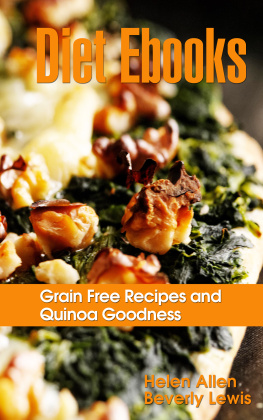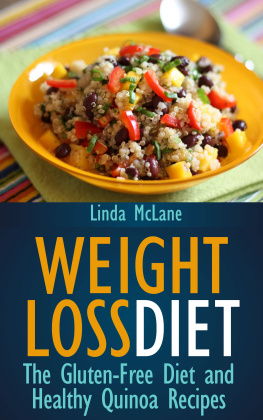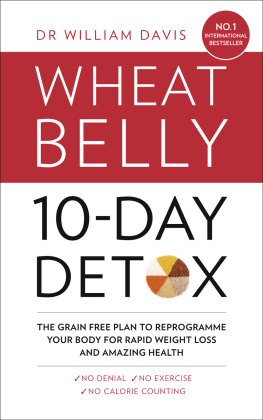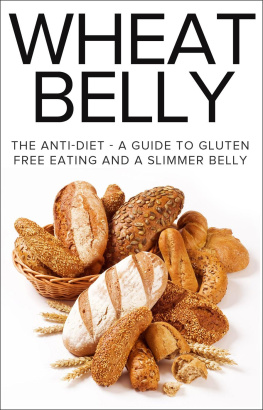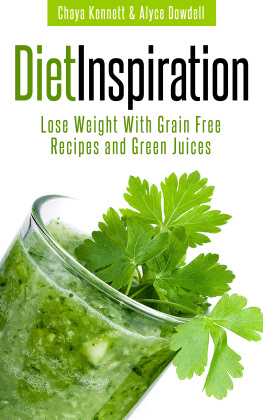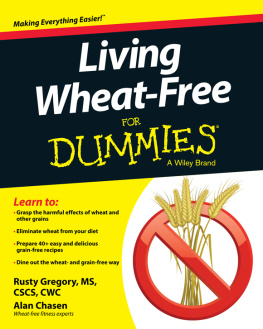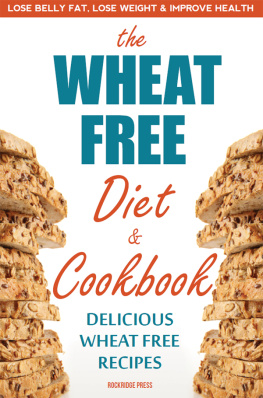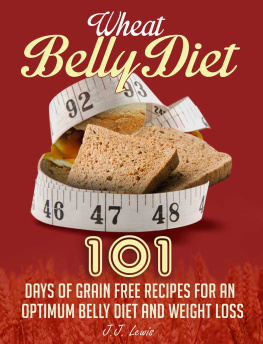Table of Contents
Diet Ebooks
Grain Free Recipes and Quinoa Goodness
Helen Allen and Beverly Lewis
Copyright 2013 Helen Allen and Beverly Lewis
All rights reserved.
Introduction
If you've spent your whole life believing that wheat was a healthy whole grain that could make you feel better and lose weight, you're not alone. Millions of people are under the impression that this ubiquitous food is actually really beneficial. In reality, however, it could be responsible for a wide range of issues. Some experts attribute health problems as varied as dandruff and dementia to this simple cereal grain.
How could wheat be responsible for so many problems? After all, it's one of the most common foods available in the Western world. Wheat is in everything from cereal to ice cream. Going without it requires a significant change to your diet. It can even require you to change your philosophy of food. After all, most people have never spent any part of their life without eating wheat in some form.
The trouble is that today's wheat doesn't have a lot in common with the healthy whole grains of our ancestors. Even whole grain wheat flour is likely to be made from ordinary white flour with the germ and other nutritional parts of the seed added back in. Plus, those nutrients are likely to be much less readily available than they once were. Modern wheat has been adjusted and adapted to grow faster, produce more starch, and create a much bigger yield than its ancestors. It has a thinner kernel and a variety of other characteristics that make it less desirable as a health food, even as they make you crave it more.
These changes in wheat are one of the reasons that so many people experience digestive problems, fatigue and other symptoms. Celiac disease has only recently hit the spotlight, but it's just one of the most obvious problems that happens in people who can't handle digesting modern varieties of wheat properly. This sensitivity can deprive your body of much needed vitamins from other food, and is even capable of affecting your moods and your ability to think.
Celiac isn't the only condition in which you can have problems with wheat, however. In fact, intolerances and allergies to this grain are on the rise. After all, it's in almost everything, so it's easy for your body to accidentally interpret it as a threat. The appetite-stimulating properties of wheat and other processed grains are also a concern. They can make you eat far more than you intended, encouraging excessive weight gain.
This book is here to help you reduce or cut out processed, modern wheat varieties in your diet and replace them with more beneficial grains and non-grain foods. It focuses on healthy diets that aren't as wheat-centric, and is divided into two distinct parts. The first concentrates on grain-free foods, with a special emphasis on eliminating inflammatory wheat and products derived from it. The second part is devoted to a great grain alternative: quinoa. This protein-rich seed is often mistaken for a grain, but it lacks the problems we associate with wheat and similar foods.
You'll get a good understanding of why and how wheat and other grains can be harmful to your health. You'll also find out how to tell if these foods are causing problems for you. If they are, this book is ready to tell you what to do about it. It includes tips on how to avoid grains and keep your diet balanced. It also offers a wide variety of delicious grain-free recipes that just about anyone can enjoy.
Consider trying out a slice of grain-free coffee cake for breakfast or enjoy a snack of banana date cookies. Enjoy wheatless breads on your sandwich or try out a side dish of shrimp soup. There are plenty of great grain-free main dishes available, too. You can have a hearty beef stew, a delicious jambalaya, a seafood gumbo or a big dish of stuffed cabbage. The five day meal plan included in the first part of this book helps you see how these foods can be organized into a nutritionally sound diet all year round.
Giving up wheat and other problem grains doesn't mean you have to stop enjoying the texture of barley in your soup or rice under your teriyaki chicken, however. All you need to do is learn to substitute a healthier alternative. The South American food quinoa offers the perfect option for anyone who misses grains but isn't willing to go back to wheat or other problem foods. In the second half of this book, you'll learn all about quinoa, how to cook it, and why it's so much better for you.
Including this exciting ingredient in your meals is surprisingly easy. Try out cooked quinoa for breakfast in the form of hot cereal, or turn it into a delicious salad with wheatless bread. Quinoa can even be combined with scrambled eggs for a tasty meal that will help you build calorie-burning lean muscle. It's great in vegetable soups and makes the perfect substitute for rice in Thai pork dishes and fresh salads. For the kids, try quinoa with carrots or cheese. It's a child-friendly treat that will help them get off of excess wheat and on to good nutrition.
If you're suffering from constant weight gain, digestive issues or chronic health problems, grains might be the culprit. Take the time to end your addiction to wheat and expand your horizons. You'll find a whole new range of delicious and nutritious foods that can help you enjoy your meals and support a healthy body. There's no need to put yourself at the mercy of genetically manipulated, processed wheat when there are so many other natural, whole foods available. It's time to make a big change at your table. Start by saying goodbye to unhealthy, wheat-dependent foods and hello to a whole wide world of tasty meals. You'll discover a wonderful new set of recipes and a healthier, slimmer you.
Section 1: Grain Free Cookbook
Normally, when people talk about going grain free they mean particularly wheat free. Wheat is found in so many food products today, especially in processed foods. However, the there is a rise in the number of people who experience health issues if they consume wheat, and in particular, the gluten part of the wheat. With the rise of wheat or gluten intolerances and allergies, the need for more alternatives for food has surfaced. First, let's talk about the health issues consuming wheat may cause.
Health Issues From Consuming Wheat
Wheat has a high glycemic index level. This means it converts to "sugar" easily in the body, which in turns converts to excessive weight gain and fat. People wanting to lose weight may find if they avoid wheat, they lose the weight easier.
Allergies to wheat can cause symptoms of IBS or irritable bowel syndrome. Other issues that may show up are migraine headaches, asthma irritations, fatigue, skin issues, and yeast infections. Sometimes people will have one or more of these symptoms and after going off the wheat will find relief. If you have any of these symptoms, you may ask your healthcare provider about having an allergy test done to see if it is caused by wheat. Or try the diet and see if you have relief.
Autism patients may show improvement if they go on a gluten free diet. For parents of autistic children, this is good news, as it may provide some help in treatment. Again, ask the healthcare provider about this possibility.
Some people may have difficulties in the absorption of minerals if they consume wheat. This may be why they show the above symptoms. Certainly, it is best for the body if it is able to absorb all the nutrients from the foods we eat. Going on a grain free diet allows the body to have a chance to absorb all the nutrients from nutritious foods.

